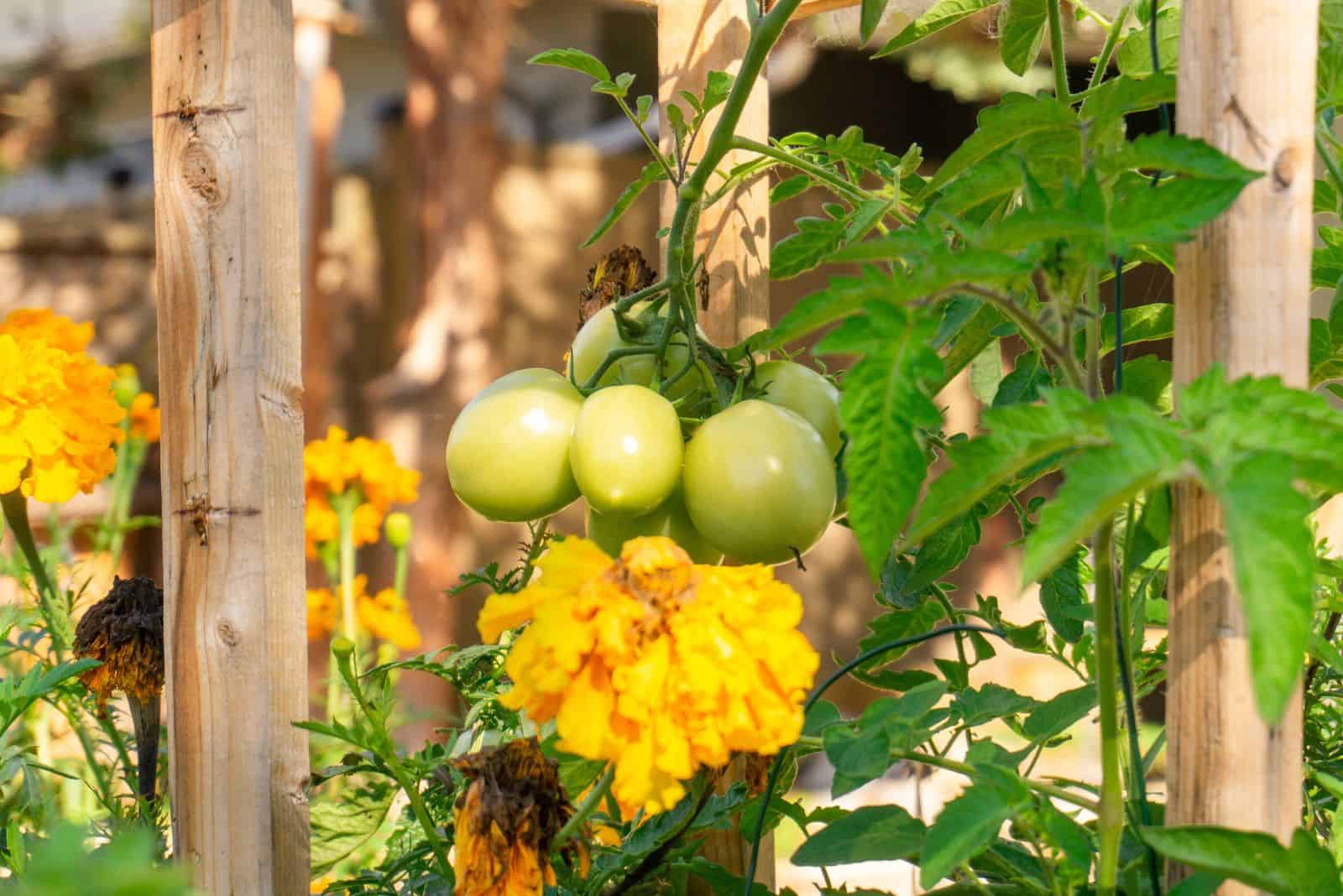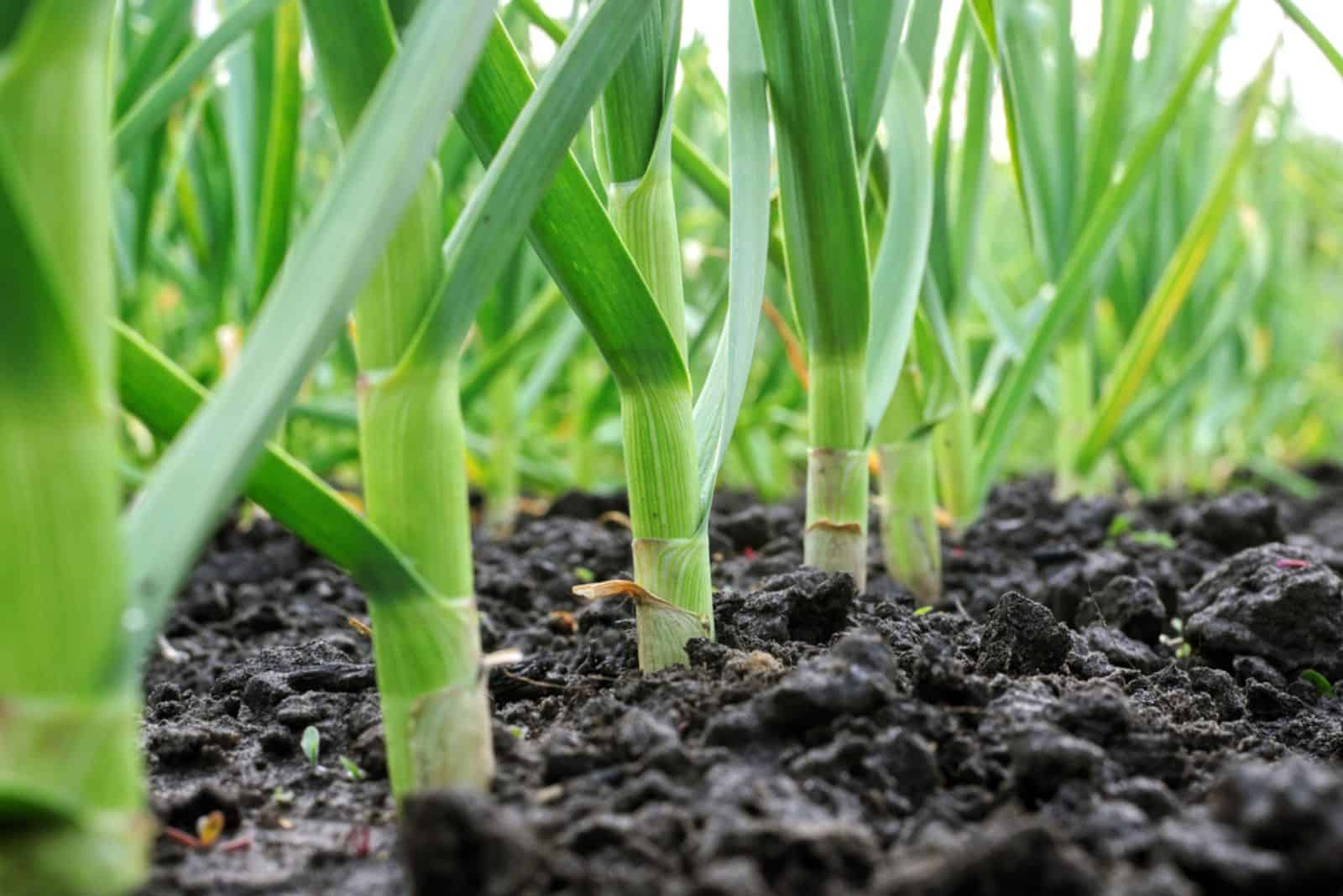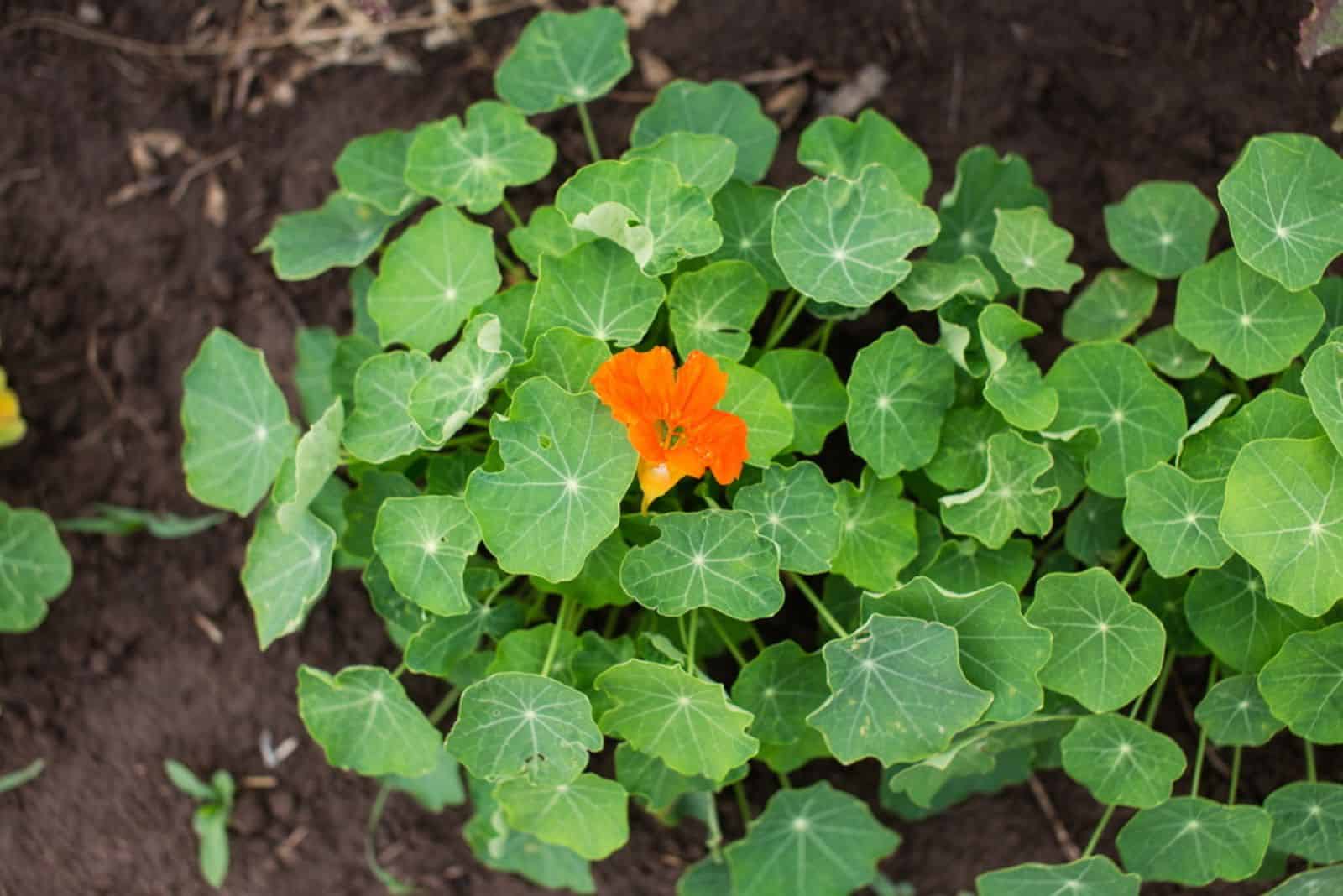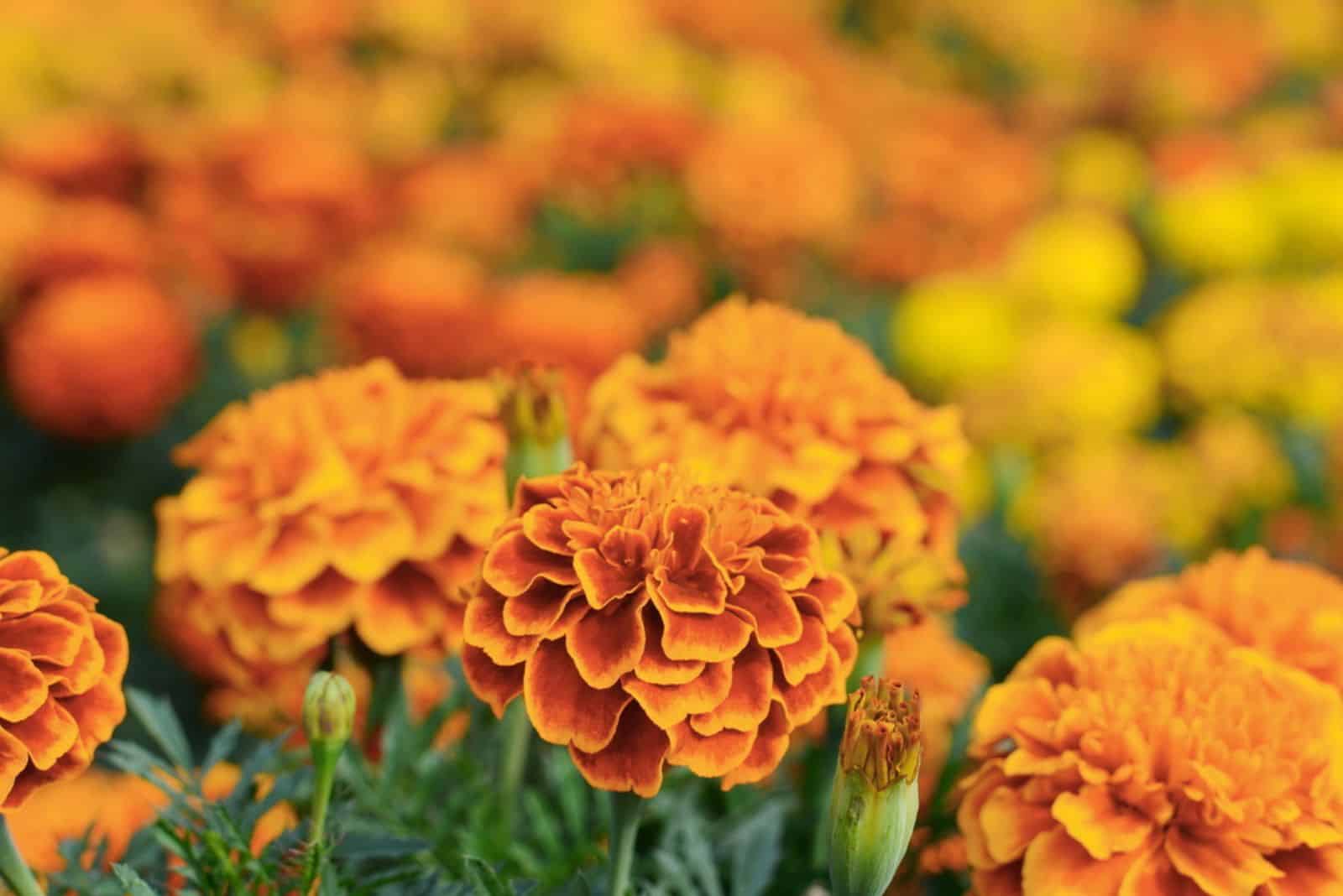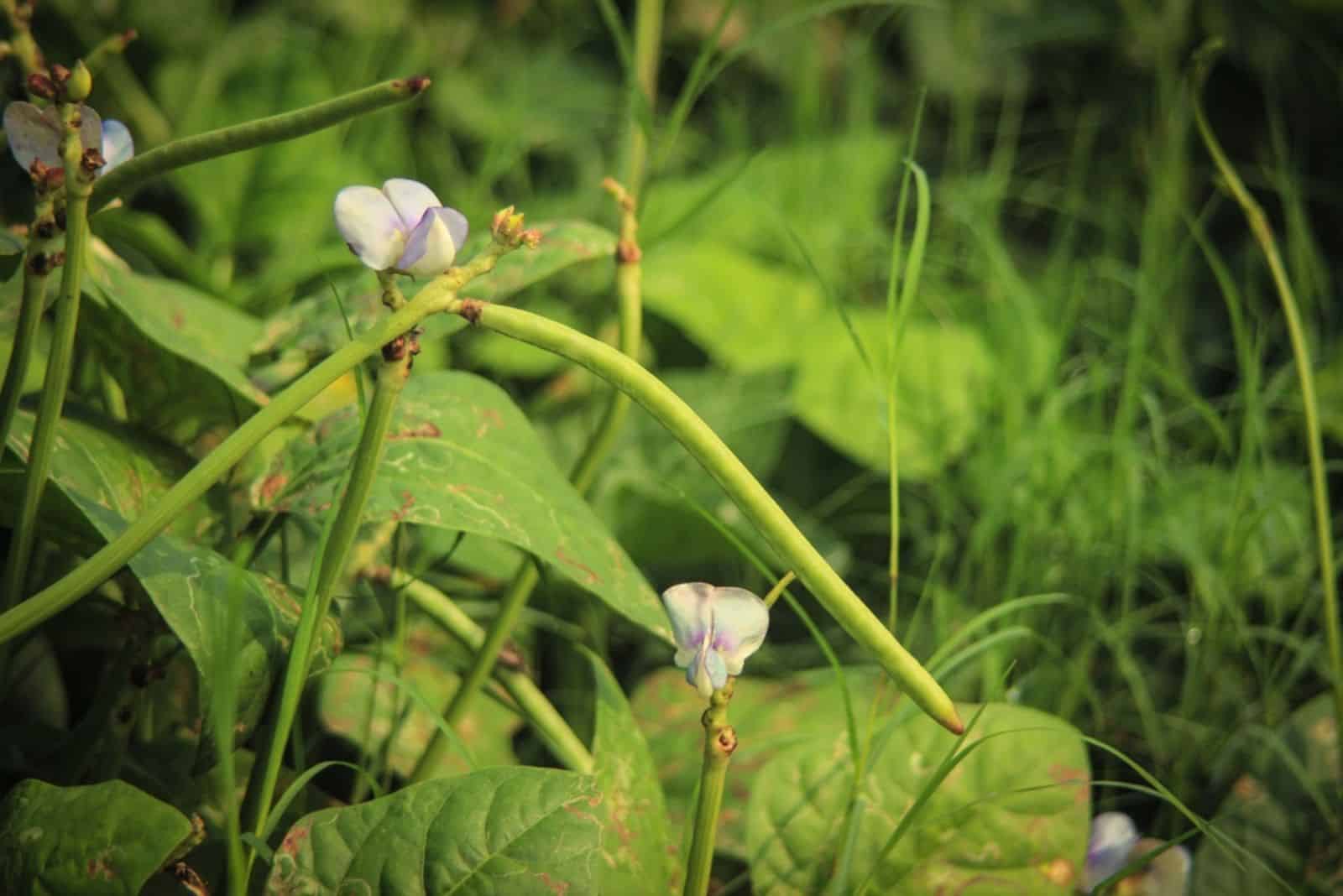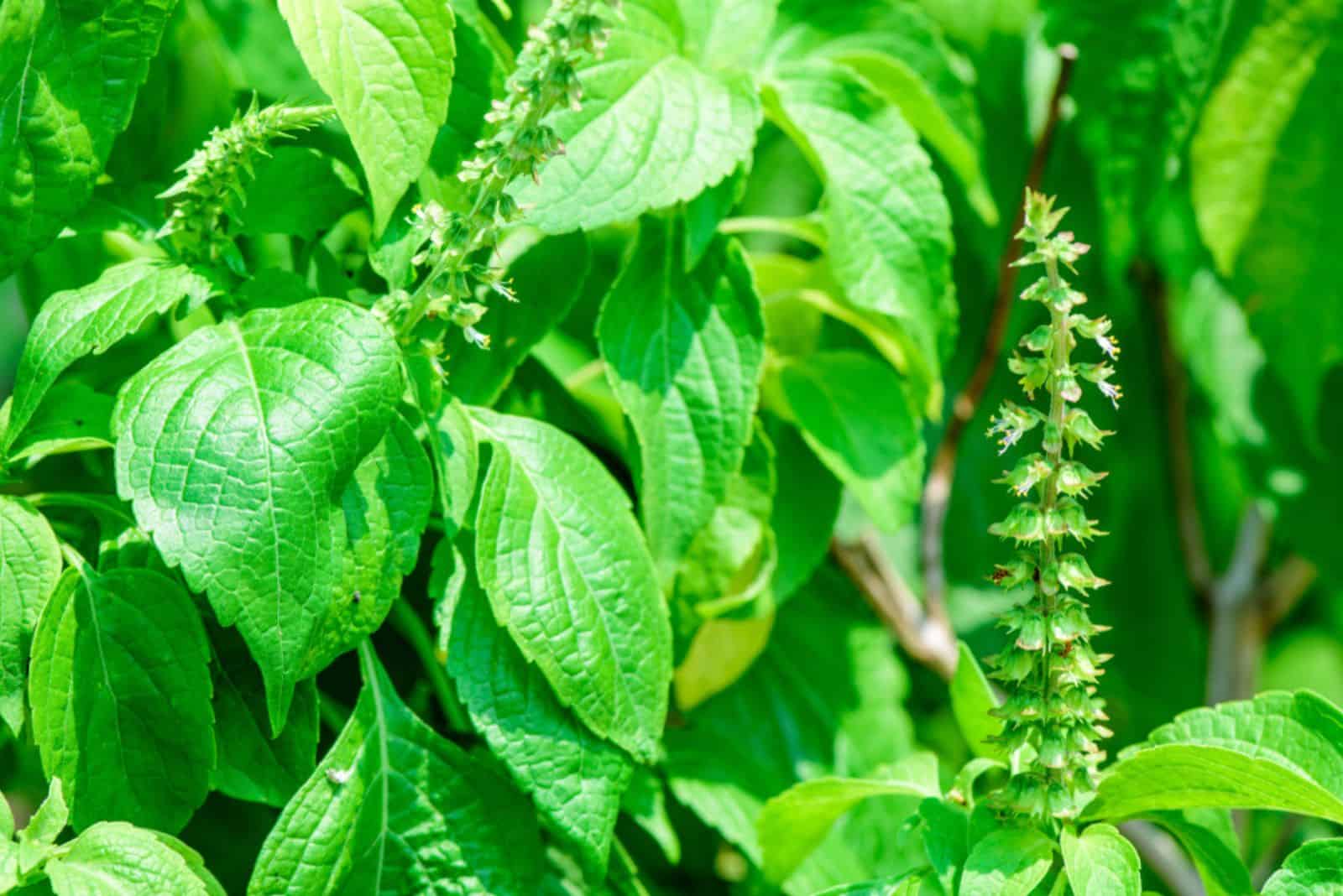Did you know that tomatoes grow better with friends? If you grow other plants near your tomatoes, they can benefit in many ways, including controlling pests, enhancing growth, and improving the taste of their buddies.
In gardening, we refer to this method as companion planting; it sounds pretty simple but there’s more to it than meets the eye.
If you are a tomato grower and afraid that pest infestation, disease, or any other issue will destroy your yield, you need to see these 9 excellent tomato companion plants to help you prevent these problems.
Let’s see how to get the most out of this method.
The Definition And Benefits Of Companion Planting
So, what’s the story behind the companion planting growing method? Well, it has been used for hundreds of years and its principle is growing certain plant species next to each other to promote growth.
Here are 6 benefits of this gardening technique:
1. Pest management: One of the hardest things for gardeners is dealing with these annoying creatures. Some plants act as pest repellents, whereas others serve as trap crops.
2. Weed management: If you cultivate certain low-growing plant species, they’ll hinder weed growth.
3. Shelter: Taller plants that enjoy full sun conditions can protect ones that don’t like direct sunlight.
4. Soil improvement: If two plants don’t require the same nutrients from the soil, they’ll create a kind of balance.
5. Improving taste: According to growers who use companion planting techniques, certain plants can improve the taste of their neighbors.
6. Increase in yield: This method maximizes crop yield. Some plants can act as trellises for their vining friends, for example.
There are a few things to consider when it comes to this growing technique. First, there isn’t much scientific evidence that proves the above mentioned benefits. That’s why some growers believe that this method doesn’t work and is a waste of time.
Still, my experience has shown me that this method can be very successful – and many fellow gardeners would agree. The key is to use the right plants.
Keeping any of the 9 plants in this article in your veggie garden should turn out well.
Let’s take a closer look.
1. Garlic
We’ll start off with good old garlic. This root veggie and its allium fellows (onions, leeks, and shallots) have a pretty strong scent, which is believed to deter some pests.
Aphids, red spider mites, and cutworms pose a big threat to tomato plants but if you plant garlic nearby, you can decrease their number. Garlic won’t fix pest problems completely, but it’ll lessen their number significantly.
Another benefit of growing garlic as a tomato companion is soil quality improvement. This veggie will balance the nutrients in the soil.
You’ll have fewer pest problems, the soil will be healthier, and you’ll have 2 awesome ingredients in your kitchen, so why don’t you give it a try?
2. Borage
Tomatoes and all other veggies in your garden will benefit from borage in two ways. First, this herb will deter notorious tomato hornworms, which can devour tomatoes and entirely destroy the harvest.
The second benefit of this herb is that it attracts beneficial insects and pollinators. This doesn’t apply to tomatoes because they don’t need pollinators, but it does apply to plants such as eggplants and cucumbers.
Another great thing about borage is that it will make your garden prettier because it produces lovely blue blossoms.
3. Nasturtiums
Nasturtiums make excellent companions for tomatoes because they act as trap crops, i.e., they’ll attract the pests that would otherwise destroy your crops.
You can eat nasturtiums, but many gardeners grow them solely because of their pest-controlling properties.
So, how does this work? Well, pests such as aphids will choose to feed on nasturtium leaves instead of your tomatoes.
There’s one thing to pay attention to when it comes to planting nasturtiums as tomato companions; you need to ensure more space between these plants because nasturtium roots develop deep in the ground and can stunt the growth of tomato roots.
4. Lettuce
I’m sure you’re surprised to see this leafy green on the list of tomato companion plants. The thing is that they won’t improve each other’s health nor will the lettuce deter pests, but the growth habit of these plants can benefit both.
For instance, lettuce is a low-growing plant and will cover the soil surface around the tomato plant base, keeping the soil cool and retaining its moisture.
On the other hand, tomatoes grow pretty tall and will prevent harsh sun rays from reaching lettuce leaves, which protects it from scorching and burning.
5. Marigolds
I never used marigolds as a tomato companion until I read research on how marigolds protect tomatoes from glasshouse whiteflies.
I had a big problem with whiteflies destroying most of my crops, so I was afraid for my tomato yields too. Luckily, I discovered this method and it seems like marigolds have helped keep my tomatoes safe.
Some gardeners also claim that these gorgeous flowers repel thrips and tomato hornworms. It did help me lessen the number of thrips, but not in the quantities I wished for.
So, if you have a problem with whiteflies on your tomatoes, simply plant marigolds nearby. If tomato hornworms or thrips bother your tomatoes, then garlic is a better choice in my opinion.
6. Asparagus
If you’ve ever had a problem with root-knot nematodes, I know how hard it can be. You’ll be happy to know that asparagus can repel these nuisances if planted near tomatoes.
According to research on using plant extracts (including asparagus) for treating root-knot nematodes on tomatoes, the method is effective and cost-efficient.
The story doesn’t end here.
Solanine found in tomato plants is believed to repel asparagus beetles, which can be detrimental if left untreated.
There’s one more great thing about this combo; both of these delicious veggies mature at different times, so they won’t steal each other’s food or the light they require at specific growth stages.
7. Cowpeas
Many gardeners struggle with Southern green stink bugs, and the problem is that these nuisances aren’t limited to tomato plants only. Black-eyed peas, or simply cowpeas, are believed to keep these annoying pests at bay.
Similarly to nasturtiums, cowpeas act as a trap crop, and green stink bugs will feed on them instead of your tomatoes.
But there’s one thing I hate about these bugs; they are great fliers, so it would be best if you could plant the cowpeas a couple of feet away from your tomatoes just to be safe.
If you have a problem with these bugs, check on your garden regularly because infestation can ruin your harvest.
8. Carrots
This one is a bit controversial. The truth is that carrots won’t repel pests that bother tomatoes but they can enhance growing conditions, which is another great benefit.
Carrots are thought to improve soil quality and enhance porosity. As a result, the roots of your tomatoes will take up food and water from the soil more efficiently.
Tomatoes, on the other hand, will provide some shade for your carrots and protect them from harsh sun rays.
I’ve heard a couple of times that carrots remain small if planted near tomatoes. That doesn’t have to be true; if the soil isn’t heavy, your carrots will grow just fine and develop into large crops even if tomatoes are near.
9. Basil
Basil and tomatoes – a match made in heaven! And I’m not talking about when it’s used in delicious meals. If you plant them near each other, basil will take care of whiteflies and thrips.
Here comes the best part! Basil is thought to improve the taste of tomato plants because they share food below the soil line. Gardeners disagree on this one, but it can’t harm your plants so why not give it a whirl?
We’ve seen so many advantages of companion planting and what it can do for tomatoes. If you use it correctly, i.e., combine your tomatoes with the abovementioned veggies and herbs, you can fix pest or soil issues, maximize space, enhance flavor, and improve growing conditions.

